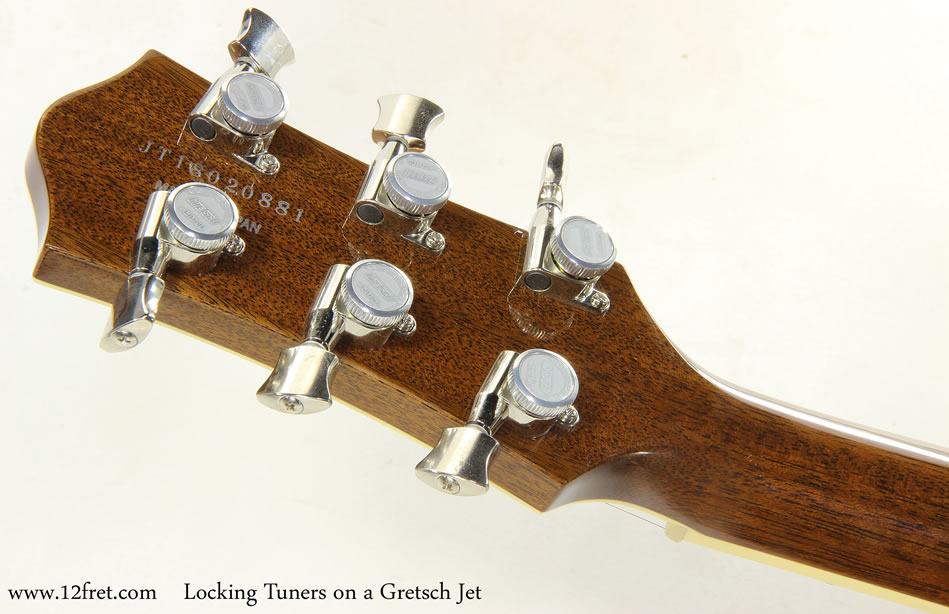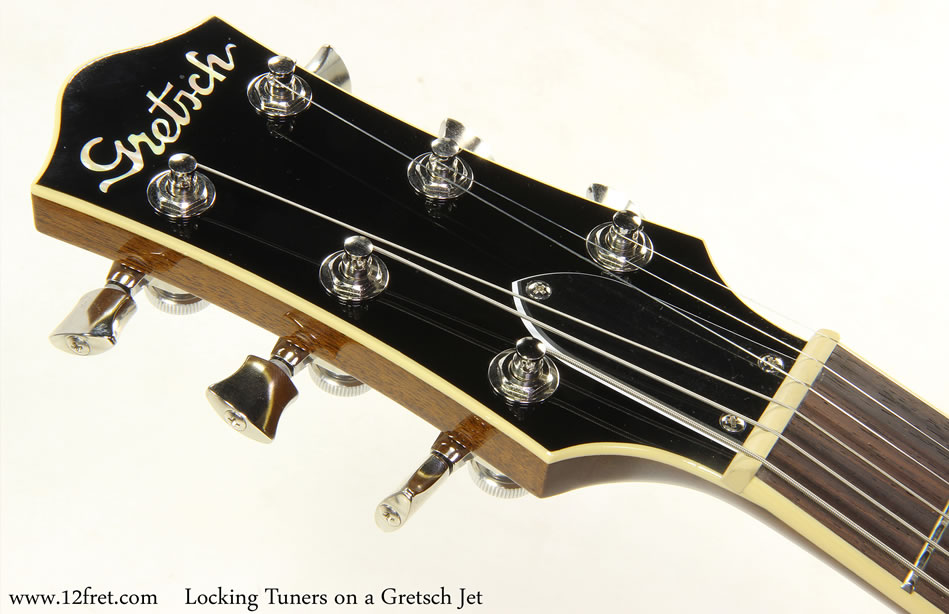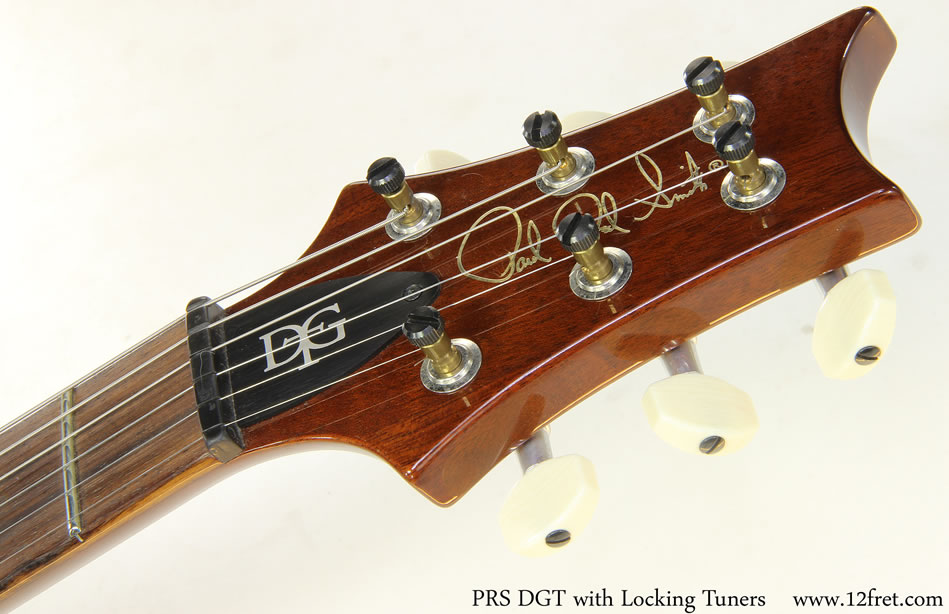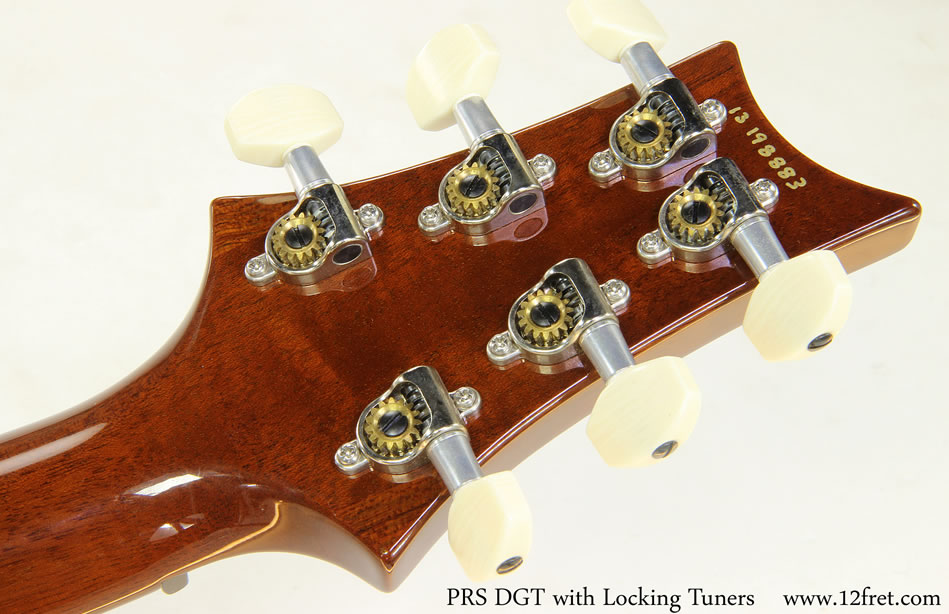
About Locking Tuners
Locking tuners are one of the more recent significant innovations in the field of musical instrument tuning gears and bring real benefits to electric and acoustic guitarists.
Though they are simple in concept and name, we’ve found that there can be some confusion about what exactly it is they do, how they work, and what they are for. And specifically, what they lock.
First, though, let’s state what locking tuners do not do. They do not lock your guitar into tune.
What locking tuners do is clamp the string so you don’t have to use multiple wraps around the post.
Locking into tune is a feature of a carefully set up double-locking tremolo system with strings fully stretched in. The term ‘double locking’ means that the strings are clamped at both the nut and the saddle, so that once they are stretched in, they do not move over any surfaces that add friction.
Floyd Rose designed the first successful double locking trem system, and its principles have been widely copied. However, even with this type of system, fine tuners must be included because strings will stretch slightly from time to time, going out of tune. Most of these systems are designed to ‘float’, meaning that you can not only send pitches down, but pull up to increase pitch. Ultimately, most are based on Leo Fender’s 1954 Stratocaster trem design, which combines the bridge saddles on a plate with a block for the strings, pivoting on a set of screw posts and balanced with a set of rear-mounted springs.

About Locking Tuners
But many people don’t need or want the sometimes extreme effect of a locking, floating system, or the potential catastrophic detune should a string break. That disrupts the balance between string and spring tension. The remaining strings will be overbalanced by the spring tension and be pulled noticeably sharp.
The purpose of a locking tuner is to reduce the number of wraps required on the tuner post, without allowing the string to slip. This has two main benefits – it greatly speeds up string changes, and the lack of wraps on the post can improve tuning stability if a non-locking trem is used, such as standard Stratocaster or Bigsby tailpiece. For acoustic steel string guitarists, the benefit is in fast changes of broken strings.
Many locking tuners also have ‘staggered’ or short posts, so that the strings are brought close to the face of the headstock. This maintains downward pressure on the nut, reducing any ringing effects.
On these tuners, the key parts of the lock start with a tuner post with a blind – drilled hole running through its center – the hole doesn’t go all the way through the post and one end is sealed. The other two components are a pin to press against the post, and a screw or lever to press the pin against the string. The post hole is drilled blind so that the pin can’t fall out during string changes.

About Locking Tuners
Sperzel makes a different type of lock for nylon strings, the Ny-Loc. The standard clamping mechanism for steel strings would tend to crush and break soft nylon and filament core wound strings. The patented Sperzel lock requires one wrap after the string is pulled taut.
Loading and removing strings from these tuners is a breeze. It’s a much simpler process than with traditional non-locking tuners. To load strings, simply loosen the lock, insert the string into its hole and pull it taut, bend the string and tighten the lock. Then, tune as normal. Often you will find that it takes less than one full turn of the post to get to pitch. To remove a string, detune, loosen the lock, and pull the string out. Changing a string this way can take just a minute or two and doesn’t require any tools, critical if you’re on stage.
Most tuner manufacturers now offer versions of their most popular models in locking versions, making them an easy upgrade. Grover has a locking version of their standard Roto-Matic, often found on Gibson guitars, as do Kluson and Schaller and Sperzel. Gotoh offers a wide range of tuners fitting most guitars.

About Locking Tuners
If you want to upgrade a guitar’s tuners, one of the first things to consider is whether the new tuners will require enlarging the post holes. Many older tuners, particularly open gear styles like Grover Sta-Tites, require a narrow hole for the post, and the bushing on the front of the head simply pushes in. However, models like the Grover Roto-Matic use a much larger hole and the bushing on the front threads into the tuner body, effectively bolting the tuner to the head. If you don’t want to change the size of the holes, choose tuners with the same post size and type.
Patrick Keenan – The Twelfth Fret
